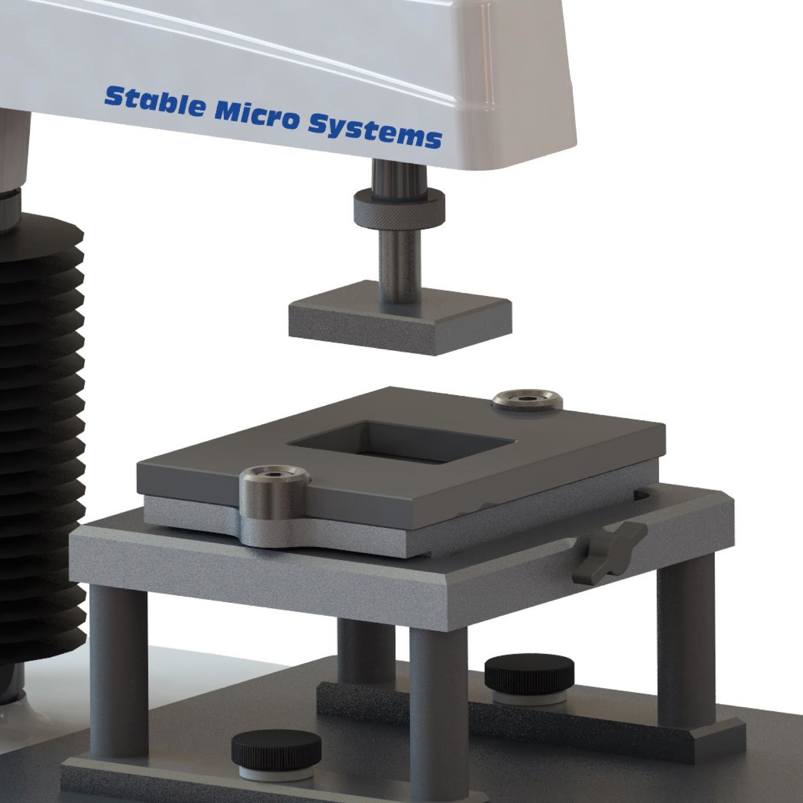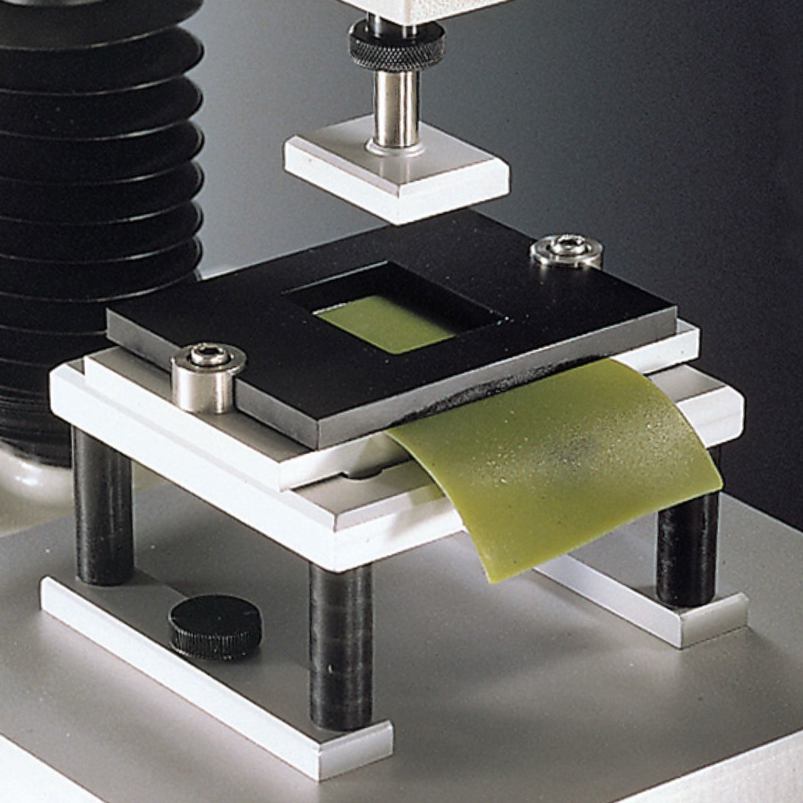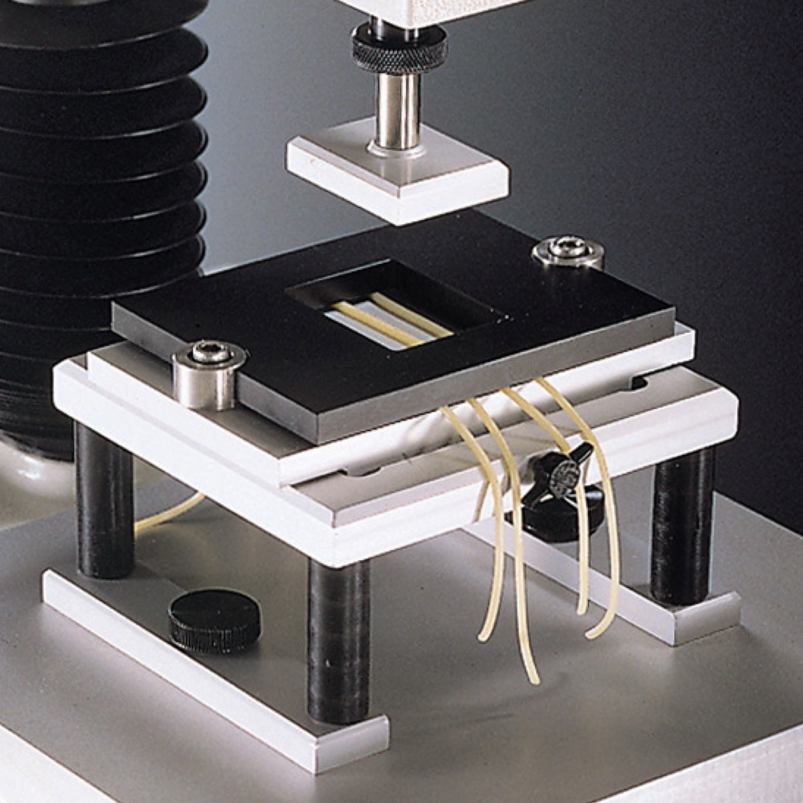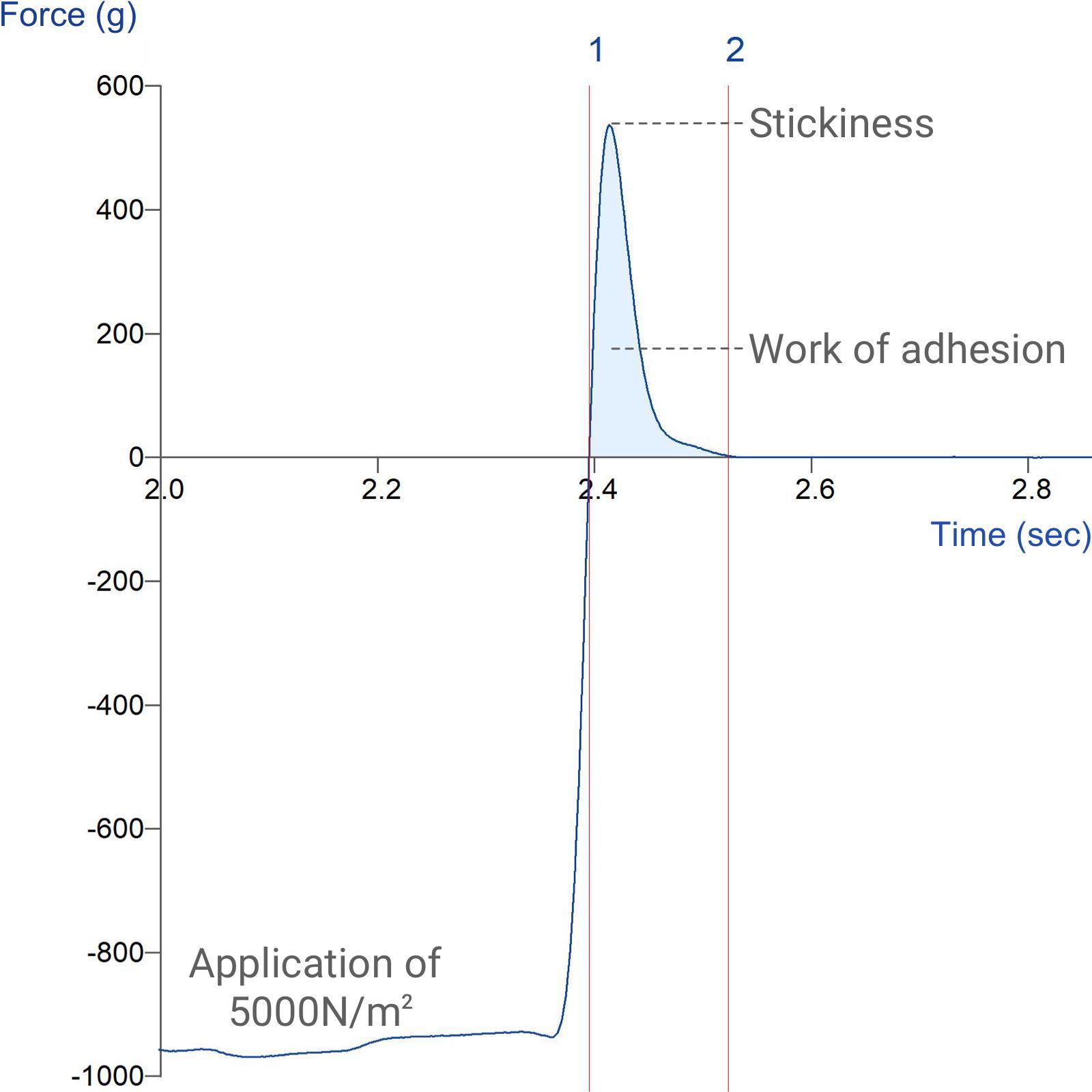Product overview
An important parameter in evaluating the quality of cooked pasta is surface stickiness. Instrumental measurement of stickiness is complicated or strongly influenced by a number of factors of which meaningful sample comparisons can only be made if these factors are controlled such as the amount of unabsorbed water associated with the cooked spaghetti following drainage, the length of time between drainage and testing, and the relative humidity of the testing area. Research has also shown that stickiness is influenced by cultivar, wheat class, raw material granulation and protein content, but was not related to sprout damage.
A repeatable method for evaluating surface stickiness of cooked pasta, uses an adhesive test with a Pasta Firmness/Stickiness Rig. This consists of a rectangular aluminium probe which is attached to the Load Cell of the Texture Analyser. Samples are centrally aligned under the probe on a raised platform and are retained by a plate with a rectangular hole, exposing the strands/sheet of pasta. The probe then applies a compression force to the sample during which firmness is measured before withdrawing at maximum speed to measure the pasta stickiness.
Stickiness is defined as the maximum peak force to separate the probe from the sample's surface upon probe retraction (the higher the force value, the stickier is the sample). The total tensile work (area under the curve) required to separate the probe from the sample's surface is also applicable.
How does the Pasta Firmness/Stickiness Rig work?
Ideal sample form
The adhesive sample is held in the lower attachment and is held down by a plate through which the upper compression attachment enters in order to come into contact with the sample to measure the force of withdrawal. The sample needs to be a solid material usually presented in a 'sheet' format larger than the aperture of the holding plate.
Benefits and limitations
- Samples are held down for platen withdrawal to allow adhesion measurement
Technical information
Installation
Full installation instructions are provided within the Education Zone of the latest Exponent/Connect software version and on the technical information sheet accompanying this product.
Chemical compatibility
Stable Micro Systems probes and attachments are commonly made from four materials: anodised aluminium (AA6082 T6), stainless steel (316 T), Delrin (acetyl copolymer) and Perspex (polycarbonate).
In general use, probes and attachments made from these materials will be suitable for testing food products and inert non-food materials.
The four materials listed above are not universally resistant to all types of chemicals and as such the compatibility of the probe/attachment material with the product (to be tested) must be established to prevent damage to the probes and attachments. If the compatibility of the product with the probe is unknown to the customer then the chemical information about the product (Material Safety Data Sheet or Product Data Sheet) should be submitted to Stable Micro Systems. Stable Micro Systems will then assess the suitability of the probe/attachment material for use with the product and advise accordingly. If this advice is not sought then Stable Micro Systems will not accept liability for probes/attachments damaged by chemical attack from the product being tested.
Cleaning and maintenance
All probes and attachments may be cleaned in warm (or hand hot) water using a mild detergent. A soft brush may be used but abrasive cleaning aids should be avoided. Stable Micro Systems products should not be microwaved or cleaned in a dishwasher.
Screw threads should be lightly lubricated after drying using a light lubricant, e.g. petroleum jelly, mineral oil. This will aid the fitting and unscrewing of the item. Each component of a probe or attachment should be wrapped separately when stored, to avoid scratching or chipping. This will safeguard against any unnecessary damage to the accessory.




